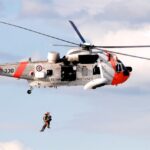Hot air ballooning is an exhilarating experience that offers unparalleled views and a unique perspective on the world below. However, like any aviation activity, safety should always be the top priority. Whether you’re a passenger or a pilot, understanding and following a thorough pre-flight checklist is crucial for ensuring a safe and enjoyable balloon ride.
1. Weather Check
The first and perhaps most critical step in any pre-flight checklist is a comprehensive weather assessment.
- Wind speed and direction: Ideal conditions are winds less than 8-10 mph (13-16 km/h).
- Visibility: Ensure clear visibility of at least 3 miles (5 km).
- Cloud cover: Check for potential storm systems or low cloud ceilings.
- Temperature: Be aware of extreme temperatures that could affect balloon performance.
Remember, weather conditions can change rapidly, so it’s essential to check forecasts up until departure time.
2. Equipment Inspection
A thorough inspection of all ballooning equipment is non-negotiable. This includes:
- Envelope: Check for tears, holes, or weak spots in the fabric.
- Basket: Inspect for structural integrity and secure attachment to the envelope.
- Burners: Ensure all burners are functioning correctly and fuel lines are secure.
- Fuel tanks: Check fuel levels and look for any signs of leakage.
- Instruments: Verify that all necessary instruments (altimeter, variometer, GPS) are working properly.
3. Passenger Briefing
Safety isn’t just the pilot’s responsibility. Passengers play a crucial role too. Before the flight, ensure all passengers:
- Understand basic balloon operation and flight characteristics.
- Know the correct landing position and how to brace for impact.
- Are aware of the location and operation of safety equipment.
- Understand any potential risks and have signed necessary waivers.
4. Launch Site Assessment
Choosing and assessing the right launch site is vital for a safe takeoff:
- Ensure the area is clear of obstacles like power lines, trees, or buildings.
- Check that the ground is level and firm enough to support the balloon during inflation.
- Verify that you have permission to use the site for launching.
5. Communication Check
Establish and verify all necessary lines of communication:
- Test radio communication with the ground crew.
- Ensure mobile phones are charged for emergency use.
- Brief the crew and passengers on hand signals or other non-verbal communication methods.
6. Emergency Equipment Check
Verify that all required emergency equipment is on board and in good condition:
- Fire extinguisher
- First aid kit
- Emergency locator beacon
- Reserve fuel
7. Weight and Balance Calculation
Proper weight distribution is crucial for balloon control:
- Calculate total passenger weight.
- Determine fuel weight.
- Ensure the total weight is within the balloon’s operating limits.
- Balance passengers and equipment in the basket for optimal control.
8. Final Systems Check
Just before inflation, perform a final check of all systems:
- Verify fuel system integrity.
- Check all carabiners and load-bearing attachments.
- Ensure the crown line and vent are functioning correctly.
9. Pre-Inflation Briefing
Before beginning the inflation process:
- Brief the ground crew on their roles and safety procedures.
- Ensure all non-essential personnel are clear of the inflation area.
- Review emergency procedures with all involved parties.
10. Documentation Verification
Lastly, ensure all necessary documentation is in order:
- Pilot’s license and medical certificate
- Balloon’s airworthiness certificate
- Proof of insurance
- Flight plan (if required)
Conclusion
While this checklist covers the essential safety steps, it’s important to note that specific balloons, locations, or regulations may require additional checks. Always defer to the most current safety guidelines provided by balloon manufacturers, aviation authorities, and experienced pilots.
Remember, in ballooning, as in all forms of aviation, there’s no such thing as being too careful. A thorough pre-flight checklist isn’t just a formality—it’s an essential part of ensuring every balloon ride is as safe as it is spectacular. By following these steps diligently before every flight, pilots and passengers alike can help ensure that their ballooning adventure is not only thrilling but also safe and secure.




